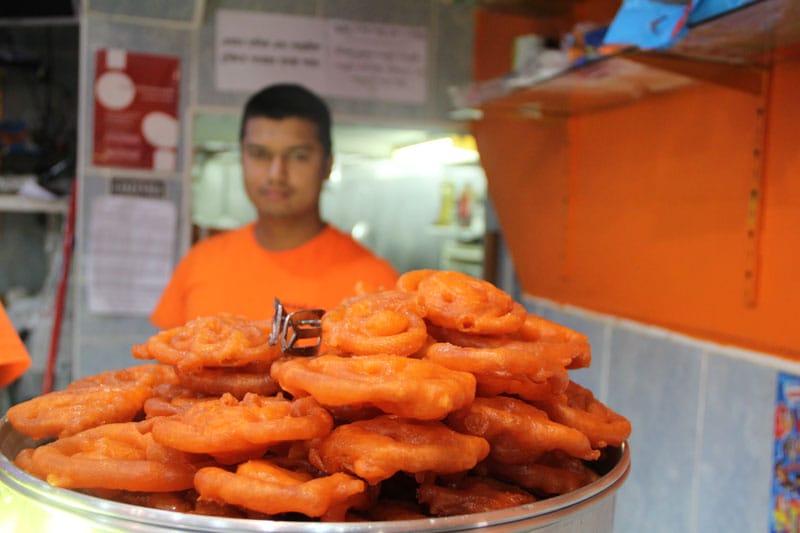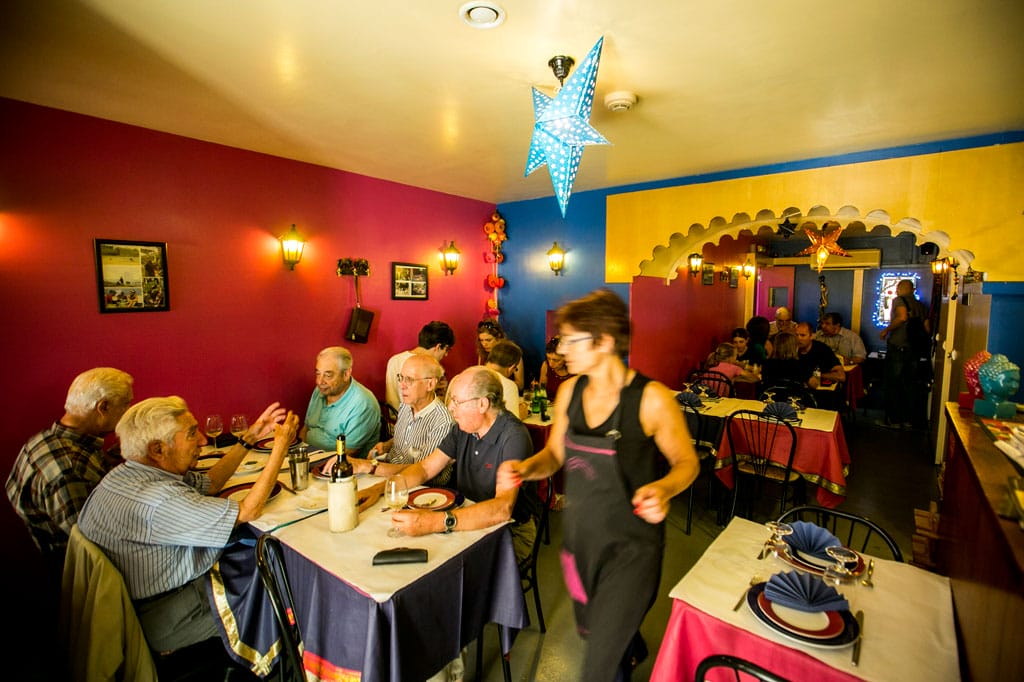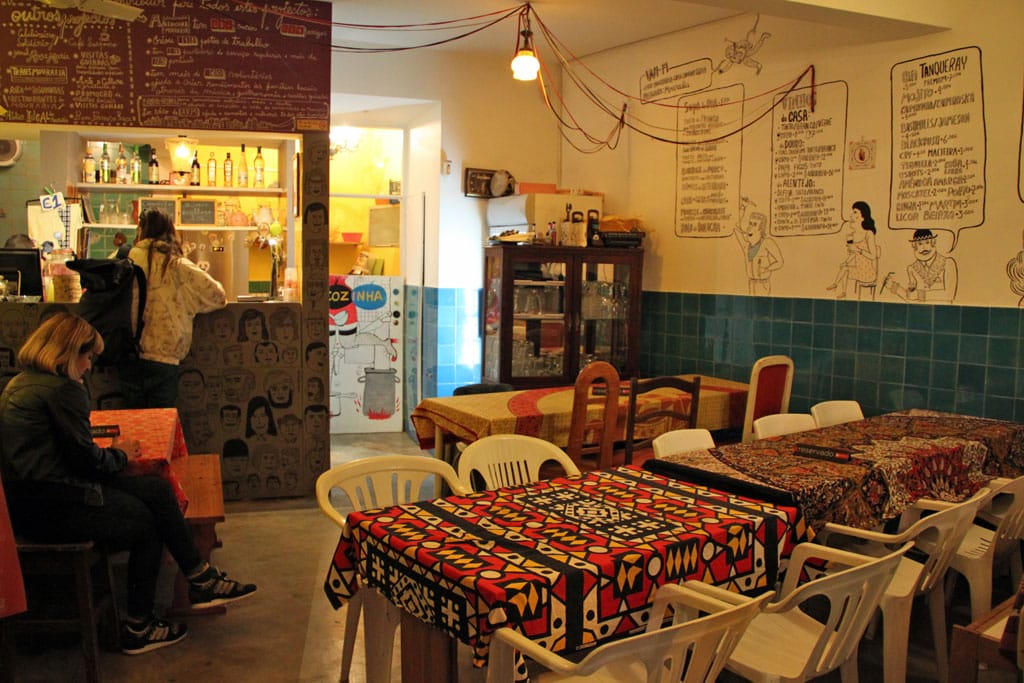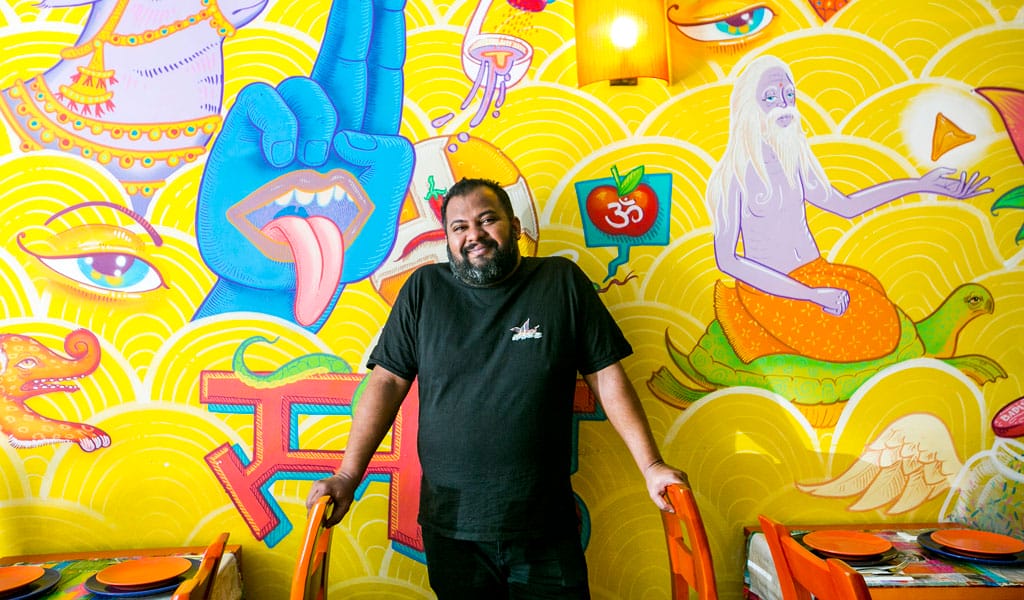Every late morning from the ground floor of a typical Lisbon building, the façade of which displays a tile-painted Madonna, a hunger-inducing scent pervades the street. Dhaka Restaurante is one of many canteens in the Mouraria neighborhood preparing its lunchtime curry. Along Rua Benformoso, among the small shops selling jewelry, trinkets and Chinese-made goods, are several restaurants that have fed the local community from the Indian subcontinent for years.
Today, however, they aren’t just cooking for them. Due to a rapid process of urban transformation, mainly thanks to tourism and interested investors, more and more people from Lisbon and further afield are passing through this winding thoroughfare looking for alternative flavors. Dhaka Restaurante is a particular favorite along this road because of its flawless lamb korma, a special type of curry made with coconut- or yogurt-based sauce, usually accompanied by biryani rice. This savory dish, cooked slowly and often enriched by onion, ginger and cashew nuts or almonds, is believed to have originated in India at the time of the Mughal Empire, and was later adopted in the wider region of South Asia, including in present-day Bangladesh.
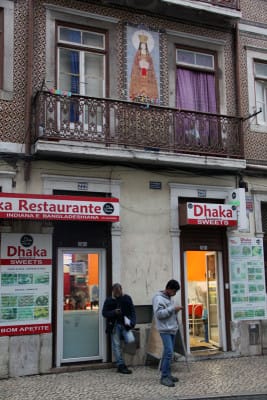 Lisbon might seem like a surprising location for such fare. Located on a road lined with halal butchers and Asian travel agencies, Dhaka Restaurante’s setting has the air of London’s Southall or another desi enclave in northern Europe. Considering Portugal’s colonial past, however, perhaps it’s just a case of history coming full circle.
Lisbon might seem like a surprising location for such fare. Located on a road lined with halal butchers and Asian travel agencies, Dhaka Restaurante’s setting has the air of London’s Southall or another desi enclave in northern Europe. Considering Portugal’s colonial past, however, perhaps it’s just a case of history coming full circle.
The Portuguese arrived in Chittagong, present-day Bangladesh, way back in 1528. They stayed for more than a century, making it one of the most important trading posts of the so-called “Discoveries” – with nationally revered pirates sending salt and spices from their bases to Europe. Though the Portuguese tried to gain a stronghold, with slave trading and Catholic missionary work providing a major boost to the fledgling empire, there is little physical evidence remaining of their presence in Bengal today. Yet contemporary Bangladeshi cuisine uses many ingredients introduced by the small European country all those centuries ago, including tomatoes, chilies (originally traded in the Indian subcontinent by the Portuguese, who brought them from their former colony, Brazil), potatoes and chhena, a type of cottage cheese inspired by the Portuguese version of ricotta. The famous rasgulla dessert using chhena is made lovingly in Dhaka Restaurante, a 10-table room that for many in Mouraria is an all-day drop-in point.
Habib, Dhaka Restaurante’s 30-year-old owner, says that this community, which has been in the neighborhood since the beginning of the 1990s, is not going anywhere. The Portuguese capital has seen a steady boom of Bangladeshi-owned small businesses, thanks to trade and tax deals between the two countries set up in 2014, though a few are now migrating, if they can, to more prosperous European cities. Dhaka Restaurante is still full of customers at all hours, however, many sitting in front of their smartphones, watching the Portuguese football league, drinking chai or eating a pakora.
As a sign of this community’s staying power, Lisbon city hall recently announced plans to build a mosque with a new square and garden as part of the rehabilitation program for the area – the existing mosque, Habib says, is located in a residential building and is too crowded. He decided to move from Bangladesh to Europe after studying mediation at Dhaka University and had been working in a tobacco shop in Lisbon’s downtown for four years before venturing into the food business. He believes it was a good decision, and his humble restaurant’s spot-on curry is testament to that.
 July 28, 2016 Tentações de Goa
July 28, 2016 Tentações de Goa
Hidden within Mouraria’s maze of narrow streets is a tiny eatery offering usually […] Posted in Lisbon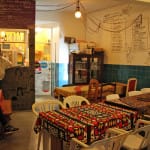 March 29, 2016 Dine Together
March 29, 2016 Dine Together
It’s a buzzing Thursday night at Associação Renovar a Mouraria (ARM), a one-room bar and […] Posted in Lisbon June 15, 2019 Jesus é Goês
June 15, 2019 Jesus é Goês
Order a plate of vindalho in one of the many Goan restaurants around Lisbon and your […] Posted in Lisbon
Published on March 09, 2016
Related stories
July 28, 2016
LisbonHidden within Mouraria’s maze of narrow streets is a tiny eatery offering usually hard-to-find fare in Lisbon: Goan cuisine. Situated a couple of minutes away from Martim Moniz – a revamped square that some years ago was named the multicultural core of the capital – this haven of flavors is a veteran of food diversity…
March 29, 2016
LisbonIt’s a buzzing Thursday night at Associação Renovar a Mouraria (ARM), a one-room bar and eatery found in a nook at the top of some ancient stone steps leading up from Rua da Madalena. Dani, a local tattooist born in Java, is cooking for around 35 people as part of the weekly Jantar Atravessado (“dinner…
June 15, 2019
LisbonOrder a plate of vindalho in one of the many Goan restaurants around Lisbon and your local friend at the table may point out that the origin of this dish is, in fact, Portuguese. Even the name can be decoded back to the Portuguese vinha d’alhos (wine and garlic), he’ll say. But let’s be honest here,…







































